
Journal Texican
Volume 2, Number 1, 2013
About The Journal Texican ®
Journal Texican ® is a showcase for writers to share their creative efforts with a wider online public. Send us your essays, short stories, poetry, tech insight reviews and related expositions. We’ll review your work for inclusion in one of our monthly publications predicated on content and professional/artistic writing style. We will provide a brief critique of your work for submissions not included. Email your work to This email address is being protected from spambots. You need JavaScript enabled to view it. . We look forward hearing from you.
J. Larry Nance

The Gallery Atelier
You are invited to visit our Gallery Atelier where you will find an exquisite collection of paintings, sculptures, prints and stunning astrophotographs by J. Larry Nance, Marsha Dickey, Juergen and Gisela-Heidi Strunck and John Bozeman and Max Corneau.
This inaugural exhibition is the first in a series of shows featuring the works by talented artists whose vision is singular, unusual, and exciting in both content and message.
Make a note to visit regularly for new work to consider for your collection and enjoy, as well, online.
Tejas
This is new content for the body text of the Tejas Section.
En La Ribera Occidental Comienza
The late Dr. June Rayfield Welch laid down a club and took the pot. Smiling he asks: “Abe, What do you want to do?”
The question was out of nowhere. But the answer was simple. To produce a stack of books. The hopeful stack had begun with a just published, green masked cover collection of poetry boiling out of a series of lost Augusts.
“Then, how about getting started. Let’s do a book on Texas Courthouses. You shoot them and I’ll drive.”
There are 254 Texas counties, and 268,820 square miles. It will ultimately wear out a brand new Chevrolet Impala to cover it all over the next thirteen weekends logging 16,000 miles averaging a 20-minute stop at each county seat.
We explained on the inside cover flap: “ The 254 Texas counties are a diverse lot. Rockwall has an area of only 147 square miles, while Brewster County ─larger than some states─ covers 6,208 square miles. As of 1970, Loving County has only 150 residents compared to Harris County’s 1.7 million (as of this writing, 42 years later, the products of Katrina, Mexico, oil and a growing commerce, the count has doubled with 2.1 million Houstonians jammed into some 656.3 square miles (where once lived Texas legendary, and cherished, cannibals the Karankawa, (Capoques, Kohanis, Kronks, and Karankawa and now replaced possibly with a less sophisticated version).
The county capitols range from meager native stone boxes to skyscrapers of glass and steel. But it was that courthouse of courthouses ─the late 19th century variety─ that caused this book to be written.
The Texas courthouse of the eighties and nineties incorporated all of the Texans’ concepts of splendor. It embodied the glory of the county. An architect designed it usually, but he was heavily influenced by the county commissioners and other leading men. The 19th century Texas courthouse was the highest architectural achievement of the combined genius of the banker, the lumber yard owner, and the county judge.”
Because so many of the old courthouses were being replaced, our book was produced as quickly as possible.
 The Texas Courthouse” followed in the footsteps of Frank Coursey who, in 1962, printed his Courthouses of Texas in an edition of 1,000 of which number 664 resides in my library. Dubbed “The Ol’ Lensman” by June, we mapped what we were seeing against his books black and whites. This was the Kodak era of film and Frank’s photos are straight forward with no embellishments. The print product was just as straight forward rendering little art but strong on the reportorial that makes his book invaluable as a historical recording as many of the old buildings have burned, have been (or are in the process of being ) razed and replaced with, in most cases, politburo style grey concrete boxes making contemporary Russian architecture colorful.
The Texas Courthouse” followed in the footsteps of Frank Coursey who, in 1962, printed his Courthouses of Texas in an edition of 1,000 of which number 664 resides in my library. Dubbed “The Ol’ Lensman” by June, we mapped what we were seeing against his books black and whites. This was the Kodak era of film and Frank’s photos are straight forward with no embellishments. The print product was just as straight forward rendering little art but strong on the reportorial that makes his book invaluable as a historical recording as many of the old buildings have burned, have been (or are in the process of being ) razed and replaced with, in most cases, politburo style grey concrete boxes making contemporary Russian architecture colorful.
Back to Texas. We left one Friday to get a head start on the Caprock. It was a bluebird fall Dallas day. We arrived in Amarillo with a blizzard howling. Mid-Saturday, driving out of the Monahans dunes, we fought a sand storm. Not a few hours later, circling back toward Dallas, we were caught up in a torrent of rain.
The net is that Texas is big: 10 percent desert, prairies, grasslands, forests, swamps, piney woods, Big Bend mountains, and the coastline. Texas has it all.
And, we saw it all.
Arrested in East Texas?
The high plains of the Caprock with its magnificent Palo Duro Canyon running south, spills out onto the ancient sea bed of what is now the Monahans Sandhills State Park.
Running farther south against the “Rio Bravo fence”, the landscape transitions into the Hill Country fossil magma dome whose pristine landscape was destroyed by an attempt to farm what would subsequently become scrabble. Ever further south, the flat landscape spills into the coastline, home to migrating birds and raging storms that have rendered scrub vegetation permanently bent towards the northeast.
And then, northward into the piney woods of East Texas where oil was, early on, discovered and Dad Joiner beat out of his energy legacy by brown bag lunch toting old man Hunt, but whose progeny set up Bubba’s fried chicken and “probably” are worth more with this Park Cities/Dallas enterprise than are currently many of the Hunts.
East Texas is full of singular people, and an equally singular landscape of lakes and swamps and eagles, and where, if you are on a good day, taking a shot of a given courthouse, may be accosted still by a zealous courthouse-defending sheriff.
“Whad you boy’s doin’ oud cheer?”
“Taking a picture of the courthouse.”
“Whad the hell for?”
“Doin’ a book.”
“Whad the hell for, you smardass?”
“Well, the old ones are going away, and we’re making a record of them before they are lost forever.”
Click. Click. Focus. Click.
“You thinking about burnin’ down the curthouse then air you?”
“No, never either burned one down or raped one up neither.”
“You’re a real smartass, ain’t you?”
“Smarter hell,” the reply is while making the last shot, folding up the tripod, smiling, and making the way as quickly as possible to the car to get the hell out of this idiot’s way with dispatch.
“Sees to it you dun come back, or I’ll ran your sorry ass in for disturbing the peace.”
“Never be back. Don’t never intend ever to disturb yore peace. Th-ads fur sure, sheriff.”
We lied. We made repeated visits over the next six months.
Never ran into the sheriff again.
WILD ROSE PASS
It needs to be noted that the NAD/Texican Gallery’s paintings and astrophotography have their roots in New Mexico, the Texas Caprock as well as the Lone Star High Country, the landscape of McDonald Observatory and Prude Ranch, Fort Stockton to be precise, where one goes for dark skies and stars “seeing” so dense that constellations are difficult to discern.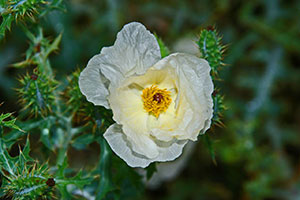
Dallas swells in the teens, twenties and thirties trekked to Fort Stockton’s mountains to get away from the stifling Cross Timbers summer heat. Amateur astronomers convene annually to harass one another over red demon eyed light polluting computers and imaging telescopes dotting the observing fields. During the day, high entertainment is watching huge untethered Dobsonian scopes being spun and lifted and tossed into scrap as williwaws drop from the southern mountains cavorting with tornadic abandon across the dusty Prude Ranch fields transitioned observing platforms.
Much has been written and sung about the annual Leonids meteor shower. Too much probably considering it all comes down to counting streaks. But the trick is in the getting somewhere to see any ‘ids’ at all. It was easy in 1944 when, from my grandparents' backyard in the heart of Fort Worth, hundreds and hundreds of meteors were commonplace and dull to four-year-olds more inclined to ice cold watermelon and concentrating on chocking back the swallowing of black seeds in fear of engendering vines out the ears. 9/11(that now defaced emergency dial-in appellation) 2001, common amateur astronomer rags harbingered November sparklers of unprecedented proportions (as they do with regularity along with telescope ads back-dropped with Hubble Eagle Nebula shots implying the production of same from the working end of a three-inch objective topped on a creaky tripod).
And so there was a scattering of the hopeful in 2001 with one such hopeful ending up in Lubbock spending a Leonid night under Jupiter skies in a brand new wind-buffeted Suburban, bought in defiance of the global occidental horde enemies of the American way.
The Sirens sing again, this time in 2002, exhorting that it’ll be 33 or so years before the likes of this year’s display. One misses one event not coming around until after one is possibly dead, but not yet another, certainly not another. You need an edge. Hedge your bet. Sally to the Texas Alps. So, worker-in-arms Barry Nelson hand picks a dusting of Plano, Texas bicycling meteor chasers whose goals will include a clear sky on the Leonid night in question, a trip to see the Marfa Lights, and lots of time to travel, within four days, around Fort Davis’ environs on the shank-powered bi-wheelers:
- Steve Hardesty who would go on to set the Mt. Locke downhill speed record of 46 MPH skirting black ice;
- Gary Lundberg whose dinner would earn him a four-star Chef designation;
- Bob Molyneux who thought Balmorea was downhill from Ft. Davis and blew a tire out; and
- Eric Skidmore who, along with the author, agreed we could pick up the cyclers anywhere at any time but didn’t, opting instead to drive around, eat at the Drug Store, read star charts on the computer back at the ranch house, and drink and sleep in anticipation of the sun going down and the stars coming out.
From Dallas at 9 a.m., it’s a 500 mile cotton, cactus, oil-gas well-strewn, sand dune desert drive averaging 70 that puts us into the Davis Mountains around 6:30 p.m. with time out to pay respects to Ol’ Rip, the miracle Eastland horny toad (Iguanidae Phrynosma) who survived a 31-year courthouse cornerstone entombment commencing on February 28, 1928 at the hands of Justice of the Peace Ernest Wood and his son Will.
It is recorded in Eastland annals that Ol’ Rip succumbed to pneumonia on January 9, 1929, after being extracted less than a year earlier alive, fit and well from said opened antique cornerstone, when the courthouse was torn down, making way for the new. Ol’ Rip lies in state in his little red casket at the current Courthouse. You can see him through the window.
Of course it’s true!
THE DESERT AND ABOVE
Some hour or so going south southwest from the far West Texas Monahans sand dunes, the Davis Mountains are misty blue intrusions on the horizon, hiding Wild Rose pass poking up 4,320 to 4,546 feet east of Balmorea. The surrounding peaks loom 700 to 900 feet more and are capped off with the aforementioned McDonald Observatory, a short bike or car ride from Ft. Davis’ marvelous, superannuated Prude Ranch, home of legendary squabbles between the annual Texas Star Party throwers and Ranch bookers over rates that grant access to equally legendary dark skies while squatting on surrounding, sometimes dust-whipped fields, common during this particular time of year.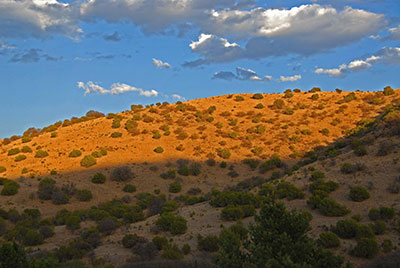
Jeff Davis County, boasting these Davis Mountains, is one percent worth farming. Otherwise, the great surrounding basin has been successfully drilled over the years for hydrocarbons, and the peaks and valleys studded with observatories, both macro and micro. Fort Davis sits between the Buckhorn Volcano/Caldera and the Paisano Volcano. Geologists say that the events had an eight- to ten-mile circumference, more than three times that of Mt. St. Helens. The county is the historical home to Texican antiques who camped around Phantom Lake Spring in the northeastern part of the county leaving a 1,000 A.D. calling card litter of some 1,200 Livermore arrow points.
Fort Davis’ McDonald Observatory is perched atop Mt. Locke, but as well the Confederate outpost became home to the Republic of Texas cult led in 1996 or so by secessionist Rick L. McLaren, about whom locals feign ignorance when queried. McLaren and his cohorts filed a bevy of so-called common law liens against neighbors and state landowners and refused to pay taxes in an effort to carve out their own country citadel and creatively line their pockets in the process.
This kind of thinking is understandable out here. Ft. Davis is so far from anything that the venue gives you a sense of being in another country, another century, isolated as you are from everything urban and frantic. You come out here and forget to read newspapers, watch tee-vee or listen to the radio for news, or anything else that might smack of teeming masses and pedantic, tedious, martyrdom. You get the idea you can do, and be, anything you want. Who’ll know!
McLaren, lanky as one remembers, succeeded RoT President John C. VanKirk, who was overthrown after Federales smoked him out. The Feds linked VanKirk to the right-wing Freeman in Montana. Anyway, then Texas Attorney General Dan Morales and U.S. marshals put an end to all these goings on, and all’s quiet again at Fort Davis, where the waitresses at the Drug Store dish up outstanding spreads available most anytime while wearing T’s that say blithely: New York, Paris, Tokyo, Ft. Davis.
Raul’s Barbeque burned down years ago, rendering a blow to eats diversity. The Drug Store has the best omelets anywhere in the world, and the best biscuits. The Limpia Hotel across the street has civil accommodations but food neither as frequent or easily accessible as the DS.
THE MARFA LIGHTS
Highway 90 between Marfa and Alpine is the center of the 35 million year old Paisano Volcano’s huge, collapsed caldera.
On the Alpine end, the Casita Restaurant serves some of the best caldera-hot Tex-Mex in the state. On the Marfa end, former Texas governor hopeful Clayton Williams has built the best para-normal viewing stand anywhere in the world. The rural telephone company mogul gave his gubernatorial hopes up to “…silver spoon in the mouth….” silver-tressed, perpetually smirking Ann Richards, with a goober crack about acquiescing to the inevitability of “rape” at a time when the quality of potential Texas leadership on both sides was in remission.
It is here to Clayties edifice that the hopeful/faithful come in hopes of seeing storied, unexplained “mystery” lights that come and go over the surrounding desert. Stories of glowing balls and points of light events molesting and entertaining observers have been around since Apaches roamed these parts, believing the “ghost lights” to be spirits. Settlers in the late 19th century reported seeing glowing unknowns, as do locals currently.
The Marfa lights are celebrated as a Chamber of Commerce festival every Labor Day.
Our crew arrives on scene under scudding skies for their dose of the phenomenon, full of Casita fare and worn out from marathon bikes rides. The north wind blows a wind chill of 20. But Claytie’s nice shelter makes a welcome break from the chill.
City sophisticates are not patient. Our group is no different. They grow restless, and bored, quickly, especially in the cold.
“Eric,” you got a flashlight?
“There’s one in the truck,” he replies, eyes glued to binoculars in desperate search of anything besides car head- and tail-lights skidding in perfusion along the western horizon.
And so, suddenly, without warning or fanfare, a Paul-on-the- Damascene Road photon effulgence from the southeast, moves to the west at the running speed of a superannuated silver-maned astronomer some 75 feet out from this august assembly.
“No!” Eric shouts in disbelief. “That can’t be, Papa! He can’t run that fast!
And so this evening’s mystery light staggers and collapses in the west amid peals of laughter led by Steve’s chortles.
Sure, it’s a sacrilege. But it’s as good a spirit light as you’re going to get on this particular night from Talisker, Knob Creek and Duracell.
PRUDE RANCH LEONIDS
Meanwhile, back at the ranch and what this screed is supposed to be about: Leonids, shooting stars, if you will. Saturday is pristine, not a cloud in the sky. Even in full moon glow, the stars are legion. This is what this country is all about, why McDonald, scores of amateurs, and we are here: for these skies. Prudes have been on this land since 1897 and hosting guests since 1921 on their now diminishing 5,000 acres. Family patriarch John G. Prude was entertaining visitors when The Bride and I were there in the fall of 1999. He became a loving memory, riding away in February on his 96th birthday.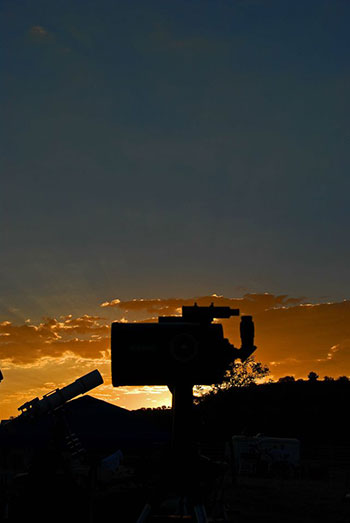
Sunday, the clouds roll in. Sunday night, the clouds are broken, and a now antique Mead 125 telescope, which has absolutely nothing to do with viewing and counting shooting stars, is trundled out for a shot at recording some double stars in between stellar streak counts.
Before we go on, an aside about telescopes. Now, computer-driven anything will do only what the computer-driven thing is programmed to do, and the user being aware of the software/hardware conventions.
That appears obvious.
The Meade Company old 125 is still pretty. It’s got really nice optics and, when married to anything TeleVu (eyepieces) makes, renders exciting visuals. But there are a bunch of catches.
First, don’t screw down the DEC knob too tightly or it will twist off. And, if the clutch slips, it’s because the grease is infiltrated beyond the gears and has to be cleaned up or the clutch will slip with maddening regularity no matter how hard it’s turned down. Taking this thing apart to clean is a crap shoot. Do it at your own risk. This particular instrument was sent back to Meade for the fix. It still slips at random, coming off of Polaris.
Autostar is a marvel, including the fact that it requires more attention than a Hollywood superstar on overdoses of Prozac. Level the scope at the vertical off the tripod. Remember that the 125 will not track in Altazimuth. Train the scope’s tracking system. Set the Autostar for location, time, date, polar mount, and then put it in the Polaris home position. I since retrofitted the unit with an aftermarket GPS that relieves me from the obligation of setting location and time.
Repeating myself: Prude skies are briefly confusing. There are so many stars even with the full moon. The elevation is strange. Finding Polaris is a brief mystery!
After setting Autostar for time, date, location and the like, one goes through a telescope alignment sequence once or twice depending on how many times the little scope clutch slips. Now, if Autostar thinks it’s aligned, plug in the cable to either the PDA or laptop, and then discover you have the wrong sync cable. Remember to either wire one up or order same from Software Bisque since the goal is to sync-employ virtual map computer application The Sky.
Operating in the manual mode, a series of double stars is, mercifully, logged quickly and Gary’s dinner is reported ready.
Viewing double stars is abandoned.
I am now forced to lapse into the first person. I walk into the Prude Ranch cabin’s living room. Everyone is seated. There is a marvelous fire fueled by stolen firewood in the hearth. The light is golden, the air languid, the mood quiet and still. Never have I been served such succulent cuts, seasoned and smoked beyond description. The roasted vegetables are crisp and piquant. Four different wines of varying degrees of crimson clear each morsel. Bread is an affront, absolutely unnecessary. There is dessert; but as outstanding as is the Key Lime confection, that sweetness pales to the entrée.
THE RUN
And so, with bike rides, telescope fiddling, and feasting completed, everyone hits frigid Sunday night mountain air at 23:00 for potential shooting star witnessing, giving up around 4 a.m. following a mediocre run, opting for sleep.
Monday breaks cloudy with a cold wind. It is overcast most of the day. The promise from weather sources is a clearing. By dusk, the sky does clear as the moon levitates the eastern mountain.
This night is spectacular. The 238th falling star burns between 04:30 and 06:00; the colors magnesia white blue-white, copper green, orange and sodium yellow. One 05:12 5 x 20 degree broad brush swatch at zenith northeast to southwest trajectory glows a magnitude two Marfa neon green and then holds at a magnitude five, fading slowly over the next two minutes.
A “skipper” paints eight to nine pointillism magnesium blue-white dots before burning out its northeast to southwest running.
Leo’s Nu is a marvel. Concentrating only on it, the meteor becomes a sparkler as a rapid-fire series of 360 degree tracks radiate briefly, peeking through the moonlight. Without the moon, this would have been an incredible event with certainly triple what we were able to observe.
Impressive three-quarter across the dome streaks from the southeast to northwest repeatedly burn out brightly in Ursa Major.
As the moon wanes to the west, so do the meteor frequencies. By 05:45, everyone has given up and the sound of a den of emphysemic lions once again rocks the house. It is hard to give it up, to go in. The cat on the lap is warm as frost paints the fields emphasizing the cold before the sun breaks the spell. They come now every four or so minutes; a slow dying away from the previous frenzy. We’ll soon be packed and on the road, anticipating breakfast.
But for now the cat and I will wait for just one more little flash, here in this extraordinary place, at this extraordinary time, pretending, for just a moment, that we don’t really have to go back over and up.
Next: Tuskers On The Fort Worth Courthouse Lawn.
Reflections
ARS Longa
Dale Chihuly
The Dallas Arboretum was transformed through December of 2012 into a poem. Dale Chihuly installed his incredible glass sculptures in the already stunning Texas City gardens, all of which are homage to the sun, creating mystical blue angelic visions in the garden’s southwestern cloister already silver with mists, cool greenery and quietly singing water.
A tower of glowing captured sunbeams soar over a green meadow.
Multi-colored Medusas flank a walkway whose twisted, entwined crystal fiery rays shimmer and move and change as the sun recedes in the blue Texas sky.
Tall, thin purple candle-like aliens wade in fountains. Huge Lalique-like frosted undulating water flower petals catch moving light through the trees, reflecting patches of cream-silver and grey blue that mesmerize.
Chihuly’s work is art beyond art; a relief from installations going under the banner “art” that perplex in either their reason for exhibition or marketability
Chihuly creates glass treasures that make you want to sculpt, paint, sing, and write. They inspire inspiration.
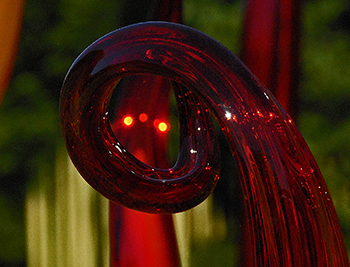
Four-foot turquoise, yellow and green balls in antique barques, impaled rainbows high above your head, ruby smoldering eyes watching you from groves, all range from complex, engineering marvels to simple globe designs whose complexity is in the creation and management of the elements that blend, making intense cobalts, yellows, reds, acid green, and orange marvels that, in these sprawling gardens, make a natural, beautiful consolidation of creative energy alongside living plants, all drawing energy from the Texas sun.
Tiny glowing, bright red-orange eyes, peer through tall fingers of twisted ruby glass wave silently in carefully designed sidewalk flower beds strewn with equally crimson blossoms.
And against this backdrop, girls celebrating being now 15, spin and dance in gold spring afternoon light in bright fuchsia and purple ball gowns, their multi-layered petticoats singing of chafing silk.
The sun gives a special life to Chihuly’s marvels. And when the sun is gone and night falls, these exquisite glass entities glow electric under a platinum moon, waiting to catch fire with the coming morning’s first light.
Chihuly’s visions make you forget everything: politics, war, the economy, joblessness. Chihuly’s visions are searing. To see them in the misty gleam of a grotto, or in full sun, or under blue-white stars is unforgettable.
Something Special in the Mailbox
A Hermes catalogue just arrived. The concept, writing, photography sails way beyond “commercial art.” Everything in it, and about it, is singular. The product descriptions are prose poetry. The photography blows craft away replacing skill with inspiration. The printing product is smooth, elegant, and rich, underscoring the “special” of not what Hermes is offering, but what Hermes can and will do. Can’t find a particular fabric color you like? Then they will dye your chosen fabric to your exact specifications.
The segment on a men’s fragrance is nothing more than a blue-green glow reminiscent of a patch of Monet canvas. It is unforgettable in its color, execution and thought.
This little book is Art as expression, Art as competence, Art as emotion, Art as the both the architect and architecture of what really matters in life.
Art is the engine that powers the absolute best objects, ideas, living—embellishments that in turn give us personal excitement and satisfaction and pride in what we see, do, say and produce.
The universe is breathtaking: star cities of unimaginable gross content, countless galaxies, glowing nebula with embedded jewel stars that defy description. And we’ve only seen a tiny fraction of all the beauty that is the universe, and we’ve just begun to comprehend the beauty that is its architecture.
The beauty of the universe is the highest form of art; this astounding loveliness is there whether anybody sees it or not. It is beauty for the sake of beauty. The universe is art at its most fundamental and grand.
The elements of art, as a positive response to the universal elements are: talent, creativity, free expression, unfettered thinking, material craft expertise, masterful technique, intelligence, integrated symbolism, and communication as a product of execution. Art as a negative response to the same elements is undifferentiated hostility, craftlessness celebrating the shoddy, whose base is emotion, exhibited through rebellious acts and products directed at the very culture in which the artist resides, which is either a positive or negative culture.
So, we have Michelangelo the sublime against Andres Serrano the base; we have Modigliani’s glowing flesh and we have Yoko Ono’s piles of dirt; we have Giovanni Bellini’s visions and Patrick Bernatchez’s leaking car.
We have the sublime; we have the banal; the former ascendant art, the latter reactionary, political, guttural.
In all of this exposition, art is a goal: art is spirit of the end product that elevates the effort, the object, beyond the everyday, the normal, the average.
Art is craft writ large in an exquisite Hermes catalogue stuffed in the post box. And there is not one hint of craft cost throughout the lyrical layout.
This is as it should be. The message is perfection.
Notables
A New Dallas Magazine
Terri Provencal is publishing Patron, and it is just marvelous. It is about all kinds of art, all kinds of beautiful things, and some things not quite beautiful; interesting working artists, both established and upcoming; architects, fashion mavens, beautiful models, business geniuses with a flair for and appreciation of art, and a rainbow of products that all embody the appellation “art”.
Patron’s advertising is a showcase of outstanding photography that minimally is on par with, and at best rivals, Art In America.
But stop. I’m ahead of myself.
It is 1959. F. Castro is ushering out Fulgencio Batista, and I am painting my way through a second college year. A portrait commission had come my way six months prior and as the soon-to-be-unveiled Marxist slouched into Cuba, I finished the hard worked painting, a study in classical glazes and scumbles, Rembrandt lighting, and Modigliani glowing flesh.
A party is put together in honor of the painting’s debut. The patron/client and his extended family arrive, enjoy dinner, and then Cristal is poured. The well-lit painting’s drapes are drawn to a chorus of appreciative gasps culminating in applause.
My patron: “Wonderful, just great, wonderful work!”; … pregnant pause, left arm crossed across the chest, right hand cradling the closely shaved CEO chin: “Can we move the eyes a little closer together?”
Frank Welch writes in the Fall 2012 Patron a stunning Nancy Nasher portrait; Nancy Nasher, brilliant daughter of equally brilliant parents, sibling to a brace of sisters; Nancy Nasher who takes a smashing NorthPark to the next level, an exquisite expansion at her directing hand sustaining all of her father’s vision, while at the same time bringing new architecture and art to an already lush retail corporate gallery setting.
Mother Peggy has, while putting together the collection that will eventually become part of the special Nasher Museum in Downtown Dallas, which suffers currently from the glassy glow of the garish gargantuan next door, had Andy Warhol do her portrait and so it follows that she commissions the great pop artist to do her trio. Nancy’s comes back from The Factory. It’s marvelous but the hair color is not right so a second is requested to new specs and knocked out to everyone’s ultimate delight. The moral: Changing hair color at The Factory is a bit simpler than moving eyes closer together.
Patron is simply an exciting, unusual publication that begs to grow and thrive based on Nancy’s story alone!
You are invited to download a PDF copy of J. Larry Nance’s Universe as a gift from us. Fully articulated copies are available from Barnes and Nobel: Nook, Amazon.com: Kindle, Apple: Sony: Kobo, and Google.
Universe: A Poetic Surprise
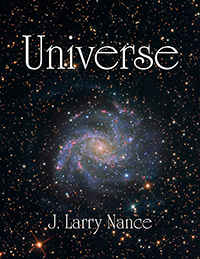
Reviewed by Langley Downs
Well-written, hard-felt, and heart-felt, Universe is poetry styled as you have never before read.
J. Larry Nance, a native Texan who lives and writes in Dallas, Fort Worth and Santa Fe, is a poet brandishing a unique style reminding us that we are stars set in mysterious universes vast and small.
A rare combination: a philosopher, a romantic, an astronomer, a religious, and a passionate family man—Nance crafts a new poetry style that is spell-binding from beginning to end.
Science? Well, there is that. Yet, this thought-provoking collection of voices taking us on a journey into our souls; What will I say exemplifies that. From the First Canto (questioning) to the Second Canto (reasoning) to the Third Canto (unforeseen complexities—those ‘oh-by-the-ways’ that catch us off guard) to the Fourth Canto (the answer already lies within us) ending with the Fifth Canto (‘eons old and ignored’) – has the knowledge been ever-present, hiding in plain sight, and thus invisible?
The magnetic forces that pull and repel us through the day-to-day chaos of life are interwoven throughout the verses. Human connections are sprinkled with intellect and Latin, and carefully woven to draw us in and to awaken us to what is within us.
Universe takes us on a search from birth to death of an understanding of ourselves—our daily lives, our time on this planet, tiny occupants of a vast Universe—and in the end, whether all this really matters. It becomes clear that Nance values the now of it all.
From managing the mundane At the Vet’s to pondering moral issues in In 1994, Nance’s messages shine as brightly as the evening star without being preachy. He seems to whisper in our ear, ‘This is what I believe. This is how I see it. It’s important that I tell you.’ And in Universe, Nance wisely underlines the justification of polemical social positions.
“In 1994, one-point-five
Million babies were
executed at $300 each”
And he writes that to live together in this Universe, we must examine closely the roots of our differences:
… there’s lots of reasons
why, it’ll justify, ….
Each poem is a constellation of its own, awakening us with clever words and arrangements, as in The Missionary:
Love is an addiction that
By the verse must be
“nipped in the bud”
Before it takes hold
Nuances of intimacy abound in all the poems, yet She flies between two worlds —a personal favorite of mine—highlights the importance of putting ourselves out there, never giving up on being alive:
Putting my trust in a moment that
Has failed me repeatedly, nevertheless
It is worth the risk, always worth the
Risk, …
And, later:We hold one another and we do
All the things on the forbidden
Love list and then lie stillborn.
Nance articulates so well those thoughts that haunt us all. Are we really all alone in this world? Can we ever really know another person? Yet when we connect and truly touch another’s life, what a glorious energy that creates.
She flies between two worlds
Sailing into my orbit on occasion
Nance causes us to think—about ourselves, our souls, and the lives we influence—and he makes us look at how “butterfly” things we do affect all our universes.
Little bird, the first poem in this collection, speaks of the ‘Love and joy of becoming’. Quark-flashes of insight with side trips on comets rocket us on a journey of becoming who we are and who we are is ever-changing. Just like the universe.
Panus Angelicus, the last poem echoes the thought that haunts us all. Is any of this real? Does time exist? Does it really matter if it is or not?
Nance reminds us to breathe and enjoy every breath. Even though our lives often become consumed with finding answers, we are part of this fascinating, enigmatic universe.
Nance creates a special place in Universe, and in Peggy lives in a cave, he shares the beauty and mystery of life, the connection with children and grandchildren, the joy of searching for—and the transitory peace of finding—meaning.
The Rose and I rested in
The tent before Baby Jake and
Cody came,
with the fan blowing gently, and
with a surprise, a little
rain came at five and pattered us awake but
all was secure beneath
the mylar sheath in which the
beautiful telescope nestled.
“But, the things we saw,” Papa said,
“The things we saw!
“Suspended we were
between heaven and
earth. At the eyepiece,
in the darkness, and
there the star clusters,
the old star clusters
were, singing to us,
unbelievable beauty,
icons, traces, letters
dancing in our eyes,
telling us stories, bringing
back memories long lost,
universes we knew, and
now, long lost come
back into our arms,
there twixt heaven and
earth, suspended in
space, peering through
the Nagler 20mm, into
the loving faces of The Universe,
revealing truths long forgotten,
making sense of it all.
“What joy it is to come
home; those flashes of
recognition when you
truly know everything,
but then in an equal
sparkle-flash, the
understanding goes away
and all left is breathlessness."
Universe does… take your breath away.
Langley Downs is a freelance writer living and working in Dallas, Texas who may be reached at This email address is being protected from spambots. You need JavaScript enabled to view it.
Will I, Or Not, Have A Lasting Relationship With A Schizophrenic Blond?
Nikon has been my camera of choice, aside from the Hasselblad, since 1958. I came into digital late with a D200 for a specific initiative, found shooting requirements exceeded the ISO of the D200, and so lurched into the world of the D800. Yes, Photoshop, the other part of this hideous equation of complexity and opaqueness and F-90 learning curves, hovers in the background on my wheezing computer.
The metaphor for a D800 is schizophrenic, and when lucid: bi-polar. There are moments when it is lucid; the majority of the time it is quite mad, all a product of scores of "controls" one never masters, one only fights as a salmon going upstream against an 100 mph wind with the firm idiotic conviction that genes will prevail, and perseverance in the effort will be rewarded, and the government won't get any more commie-like than it is already.
I had a Jaguar sedan in my late teens that resembled a Rolls Royce. It was absolutely beautiful, a damn work of art. It got fantastic gas mileage (about which I didn't care at the time with gas being 19.09 a gallon) because it wouldn't run but 25% of the time.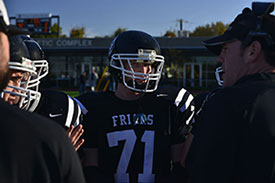
The D800 is one thing, the Nikkor lens, quite another. I have a broad selection of glasses, all of which are stunning. Now, married with these 1.2 or whatever masterpieces, you hit it just right and WHAM! You get breathtaking shots. But these shots are the product of laboring with ISO (forget it, ISO 200 and ISO 800 digital means nothing to film ISO/ASA), Metering, Exposure Modes, Shooting Banks (Oh god! Shooting Banks! Get somebody to explain Shooting Banks to you because the hardcopy exposition available certainly doesn't have a goddamn clue), and11 different available settings all the way from Image Quality to Auto Distortion Control.
You begin to get the picture, pun intended. Available Modes, A, S, M and P (Aperture, Shutter, Manual and so-called automatic) priority settings are not constant and the checked histogram showing on target (bell shaped curve or close to it) is really about 1/2 stop or worse over exposed. And this really becomes an issue when shooting in a dynamic venue like a football game. I shoot Manual -1 stop to get a rich, full exposure.
I have friends who are astrophotographers. They have tons of equipment and miles of wires hanging off their scopes and computers. Beyond complex. But what is being sold as complexity is really versatility.
If you enjoy tons of equipment and miles of wires hanging off your equipment, and you have an Expodisc, (oh you must have an Expodisc and certainly a variable density filter and the best circular polarizer you can buy) you will adore holding the D800, it's just like sitting in a dead Jag.
Buy hey, when the Jag was running, and the dash was glowing with purple lights, and the moon roof was rolled open, and the red Connolly hides giving off that sweet smell along with that 17-year-old blond sitting close to the right, there was nothing better.
When you get home from a football game and there are 60 shots out of 350 that are art, well, there's nothing better, but scary when you look at that string of bleached out crap you just knew was fine when you glanced at the damn histogram.
So, if you ain't a-skeered of not being able to trust that blond to take your money and run, get a Nikon D800. That one stunning shot is certainly worth it. But I do wish all the shots were as stunning. Almost strangling yourself on the sidelines with an Expodisc is problematic.
